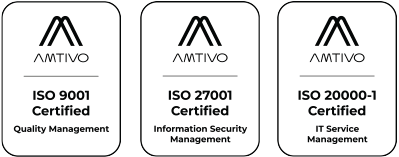Third Party Risk Management
Organisations wanting to make real improvements must gain operational command of the security posture and risk of their third parties.
Third Party Risk Management (TPRM) involves assessing and mitigating risks associated with engaging external vendors, partners, or service providers. It ensures that third parties handling sensitive data or critical operations adhere to security and compliance standards. TPRM includes evaluating the third party’s cybersecurity posture, monitoring their ongoing compliance, and managing contracts to align with organisational risk tolerance.
By implementing robust TPRM processes, organisations can reduce the likelihood of data breaches, financial loss, or regulatory penalties caused by third-party vulnerabilities.
Effective TPRM also fosters stronger, more secure partnerships, ensuring that external collaborations do not compromise the organisation's integrity.
Comprehensive Third Party Risk Management requires regular assessment of your vendor population to ensure that it is being properly managed and that vendor maturity is improving over time.
Our team provides expert industry advice to help you manage your security reputation and accelerate your third-party risk management programme.
What's involved?
-
Increase understanding of business risk and identification of risk mitigating factors
-
Identification of a list of third parties across business functions
-
Classification of the Third Parties based on their risk profile
-
Identification of risk to which your organisation is exposed based on the service(s) provided by the third party
-
Utilisation of common industry methodology to identify the compliance requirements and assess current level of compliance
Challenges addressed by Third Party Risk Management
-
No common guidelines for managing third party risk
-
Risk of reputational damage should an event occur at your third-party
-
Incomplete population of vendors with sensitive data
-
Increased focus on securing customer personally identifiable information (PII)
-
Inconsistent risk assessment and review practices across organisation
-
Third-party failure to comply with a required regulation
-
Third-party failure to maintain continuation of business as usual (BAU) for your organisation
-
Risk of doing business in a specific country including legal/regulatory, geo-political and social-economic considerations
-
Risk of financial loss due to third-party failure or non-performance
Gartner Recognised
We are thrilled to share that Integrity360 has been recognised as a Gartner Representative Vendor in 5 of their Market Guides, including: Managed Security Services, Managed Detection and Response, Gartner's Market Guide for Co-Managed Security Monitoring Services and Managed SIEM Services.
Gartner has included a range of providers within its market guide for managed services to ensure clear coverage from a geographical, vertical and capabilities perspective. Those included in the Gartner market guide display clarity in the vision for an end-user outcome-focused offering distinct from a pure technology-driven offering.

Speak to an expert
London: +44 20 3397 3414
Sofia: +359 2 491 0110
Cape Town: +27 08 606 25673
Johannesburg: +27 08 606 25673
Third Party Management FAQs
What is third-party risk management (TPRM)?
Third-party risk management is the process of identifying, assessing, and mitigating risks associated with vendors, suppliers, partners, and service providers who have access to your systems, data, or operations.
Why is TPRM important?
Third-party breaches are a leading cause of data loss and cyber incidents. Without visibility into your suppliers' security posture, your organisation is exposed to regulatory, reputational, operational, and financial risk.
What does Integrity360’s TPRM service include?
Integrity360 offers end-to-end TPRM services including third-party risk assessments, supplier questionnaires, security scorecards, risk tiering, remediation planning, governance frameworks, and ongoing monitoring of critical vendors.
How are vendors assessed for cyber risk?
Vendors are assessed based on their access to sensitive systems or data, their security controls, regulatory alignment (e.g. GDPR, NIS2, DORA), incident history, and responsiveness to due diligence requests.
Is the service suitable for both new and existing suppliers?
Yes. Integrity360 supports onboarding assessments for new suppliers and periodic reviews for existing third parties to ensure ongoing compliance and risk visibility throughout the relationship lifecycle.
Can the service integrate with procurement and legal teams?
Absolutely. TPRM is most effective when embedded into procurement and contracting processes. Integrity360 helps align security expectations, define contractual requirements, and streamline collaboration across departments.
Does the service support compliance with NIS2, DORA, or ISO 27001?
Yes. Supplier risk management is a core requirement in many frameworks. Integrity360 maps TPRM processes to these standards, ensuring compliance while reducing manual effort during audits.
What makes Integrity360’s third-party risk service different?
Integrity360 combines technical assessment, regulatory insight, and practical implementation support. You get tailored, scalable risk management—not just checklists—supported by cyber experts who understand your business and sector.



